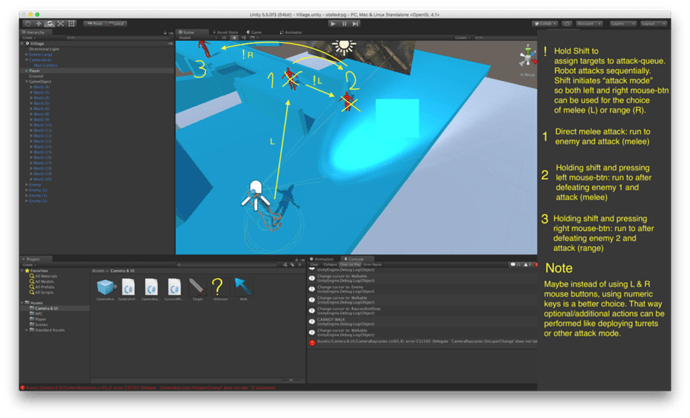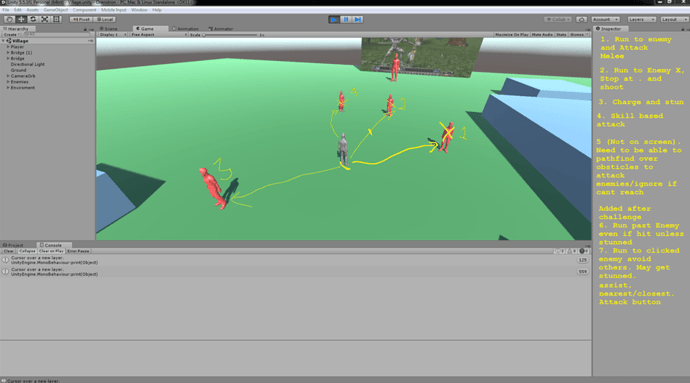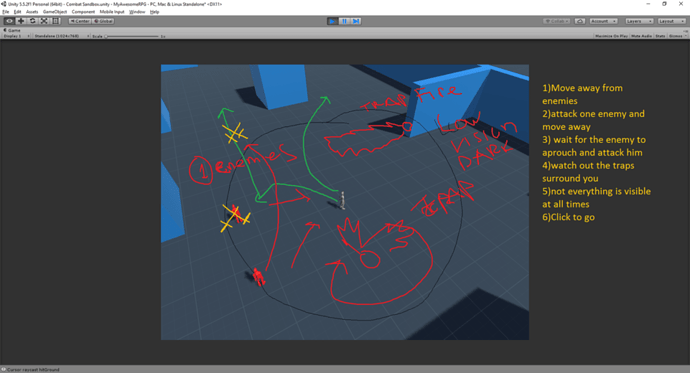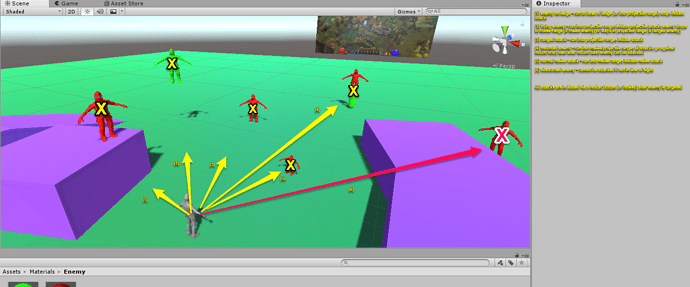If you’re reading this, there probably aren’t very many posts yet. But don’t worry, you can be the first! Either create a new post or just reply to this one to say ‘hi’.
Hi everyone,
Wanted to share an attack design with you. Since my game has a robot as a main character I like the idea of “programming” the droid so I thought of programming the droid with a set of attack/defense instructions. These are added to an attack-queue. The robot works down the queue and attacks each enemy the way it’s programmed to do. More info in the attached screenshot.
In this there will be some Traps and enemies and you have to carefully watch out where you step with low vision because of Darkness surrounded you and only fire traps are available or torch/light source on the player you have to move or attack. You can also try using the traps against enemies.
I know this is old… but I just started the course a few days ago. Here is my combat design diagram (haven’t done much with my combat sandbox yet):
Text is probably hard to read, but I will have flying enemies and enemies on creature mounts that must be killed before the enemy can be attacked directly.
Great lesson, not really a question but just an observation about enemies on unreachable ledges and how that might not always be a design problem.
I could see a situation where you want the player to “run the gauntlet”, in that they have to make it through an area despite not being able to attack back at the enemies.
Of course it has to be done sparingly otherwise it’s just annoying, but just an idea.
Anyways, on to the next lesson 
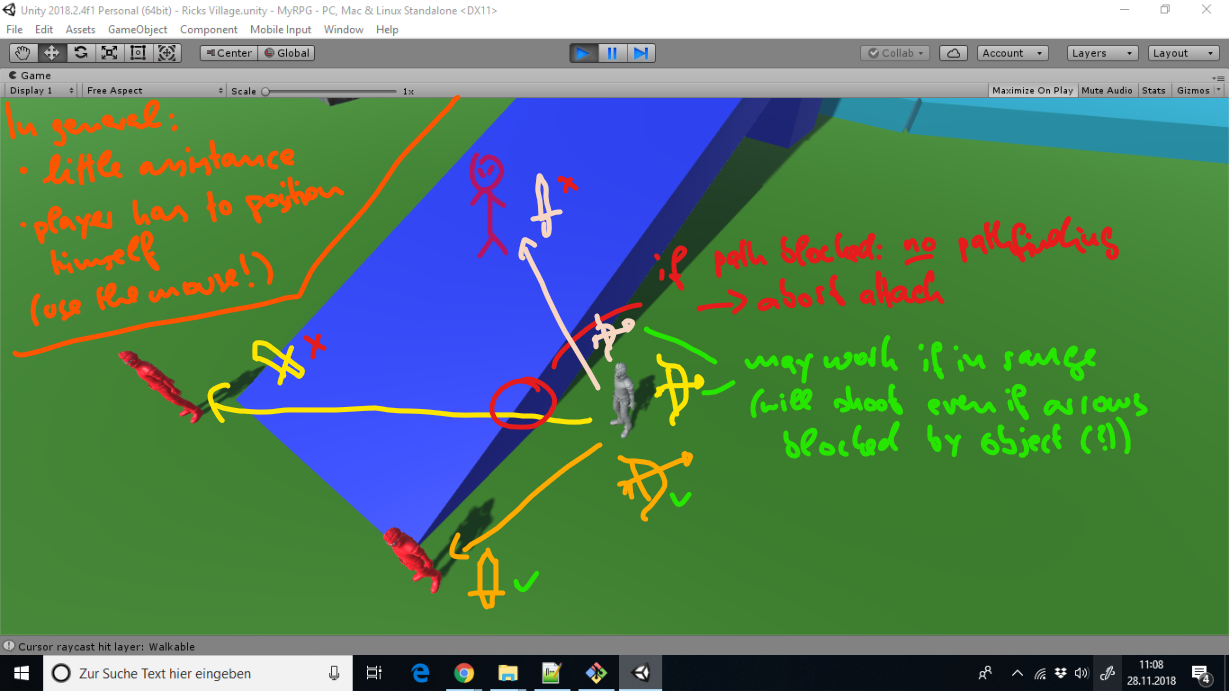
In essence:
-
ranged attacks are a bit more forgiving than melee attacks, i.e. they may work when melees don’t (e.g. due to some object blocking the player, or the enemy being unreachable due to being on high/low ground or something similar)
-
there will be little assistance, so for example, if the player wants to go into CQC but is blocked by an object, he first has to circumvent the obstacle manually (moving with the mouse), and then try attacking again

